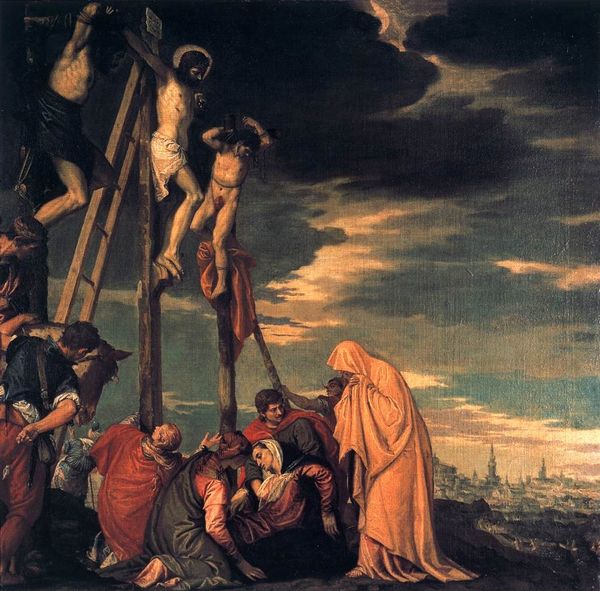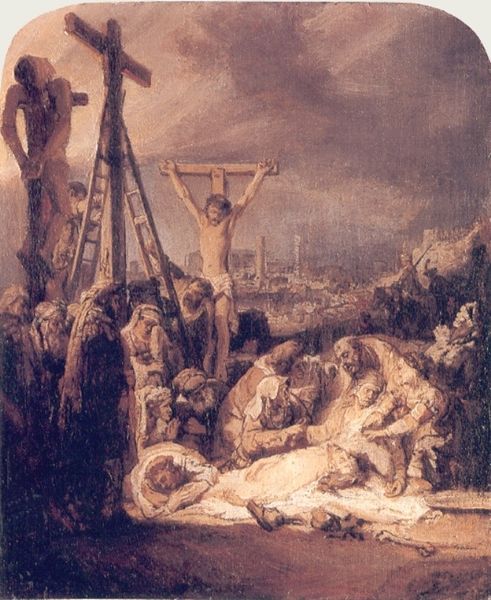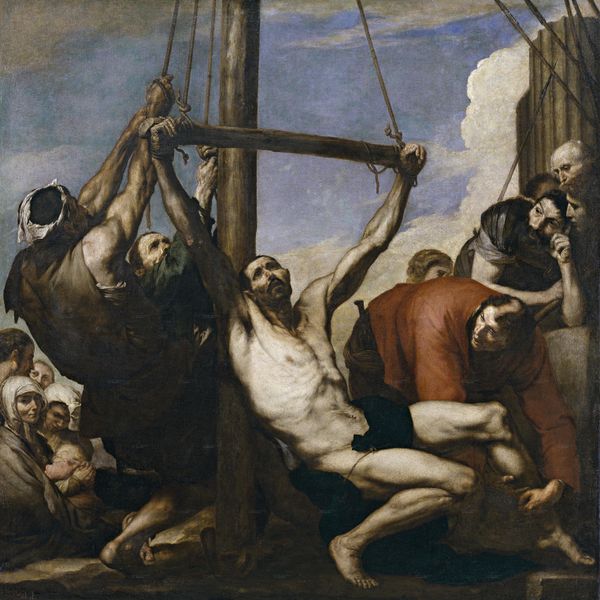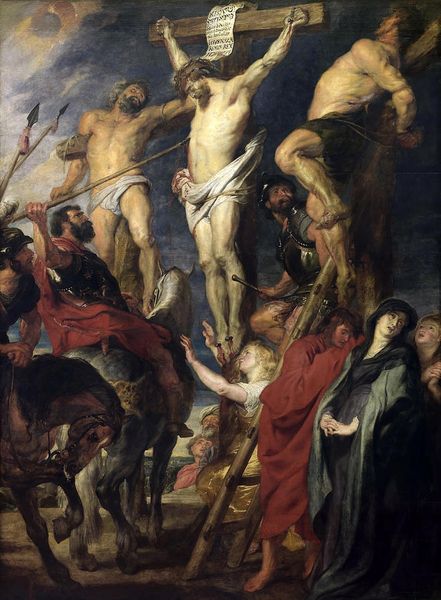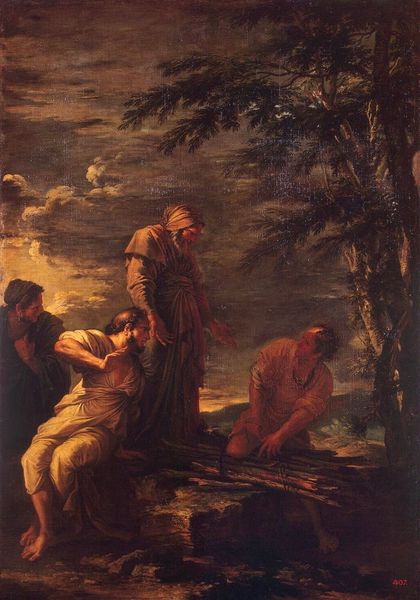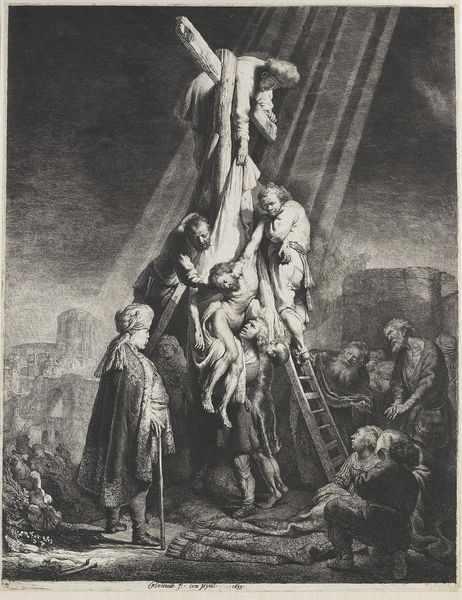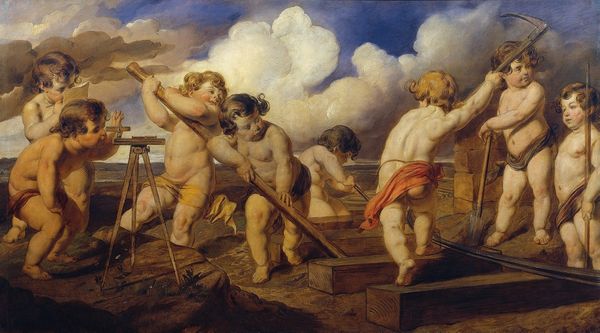
Copyright: Public domain
Editor: Here we have Berthe Morisot's "Calvary (after Veronese)," painted in 1858 using oil paint. The figures are arranged with so much dynamism, it almost feels theatrical. What's your interpretation of this piece? Curator: Seeing Morisot engage with a subject as weighty as the Crucifixion compels me to think about her own position within the 19th-century art world. Considering that this is after Veronese, how does Morisot engage with or depart from the historical and religious tropes? Editor: I see she’s chosen to represent a classic biblical scene, but what’s she trying to say? Is she just practicing her technique, or is there something more? Curator: Precisely! I see Morisot grappling with prevailing societal expectations of women artists, largely confined to domestic scenes and portraiture. Choosing to engage with history painting, a traditionally masculine domain, becomes a subtly subversive act. What elements in the painting emphasize the drama and emotionality? Editor: Well, there’s a dramatic, dark sky looming behind the cross that evokes turmoil and despair, and everyone seems in agony. Curator: Yes, and it speaks to broader societal grief but, more specifically, female mourning. How are those at the foot of the cross represented and how might it speak to contemporary perspectives? Editor: It hadn’t struck me, but it feels like the women at the cross have been moved from supporting characters to carrying the weight of suffering, front and center. Curator: Exactly! Through the portrayal of the suffering, Morisot subtly amplifies the voices of those often marginalized, offering us not just a religious scene but a profound meditation on grief, power, and gender roles. Editor: It’s incredible to think of this as a young artist testing boundaries – both artistic and social! Thanks for broadening my view.
Comments
No comments
Be the first to comment and join the conversation on the ultimate creative platform.
